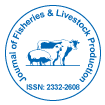Reproductive Efficiency and Its Role in Livestock Sustainability
Received Date: Nov 01, 2024 / Published Date: Nov 30, 2024
Abstract
Reproductive efficiency is a cornerstone of livestock productivity and sustainability, directly impacting the economic viability and environmental footprint of animal production systems. Efficient reproduction leads to optimal herd management, improved growth rates, and enhanced genetic progress, all of which contribute to more sustainable farming practices. However, factors such as genetics, nutrition, environment, and management practices significantly influence reproductive outcomes in livestock. This paper explores the relationship between reproductive efficiency and livestock sustainability, focusing on the key drivers of fertility and reproduction in various species. Advances in reproductive technologies, such as artificial insemination (AI), embryo transfer, and genetic selection, have revolutionized livestock breeding, enabling producers to maximize genetic potential while minimizing environmental impacts. Nutritional strategies also play a pivotal role in ensuring optimal reproductive health, while proper environmental conditions and effective management practices further support fertility. However, challenges remain, including the need for cost-effective solutions, improving reproductive health in challenging climates, and addressing the balance between intensification and animal welfare. By understanding the critical elements that drive reproductive efficiency, livestock producers can develop more sustainable practices that enhance both productivity and welfare. The integration of advanced reproductive technologies and management strategies is essential to achieving long-term sustainability in livestock production.
Citation: Chi C (2024) Reproductive Efficiency and Its Role in Livestock Sustainability. J Fisheries Livest Prod 12: 598. Doi: 10.4172/2332-2608.1000598
Copyright: © 2024 Chi C. This is an open-access article distributed under the terms of the Creative Commons Attribution License, which permits unrestricted use, distribution, and reproduction in any medium, provided the original author and source are credited.
Share This Article
Recommended Journals
Open Access Journals
Article Tools
Article Usage
- Total views: 411
- [From(publication date): 0-0 - Mar 29, 2025]
- Breakdown by view type
- HTML page views: 251
- PDF downloads: 160
